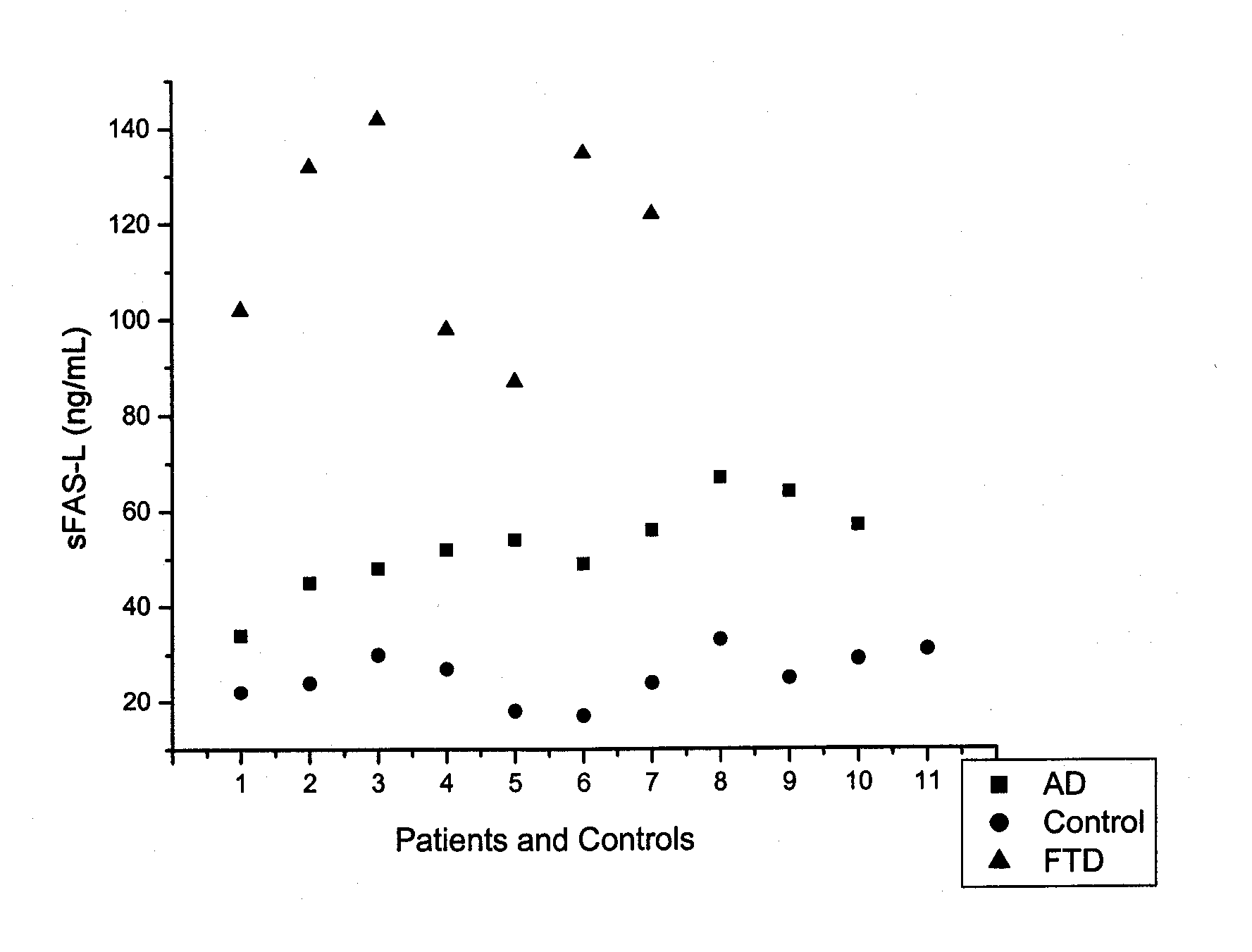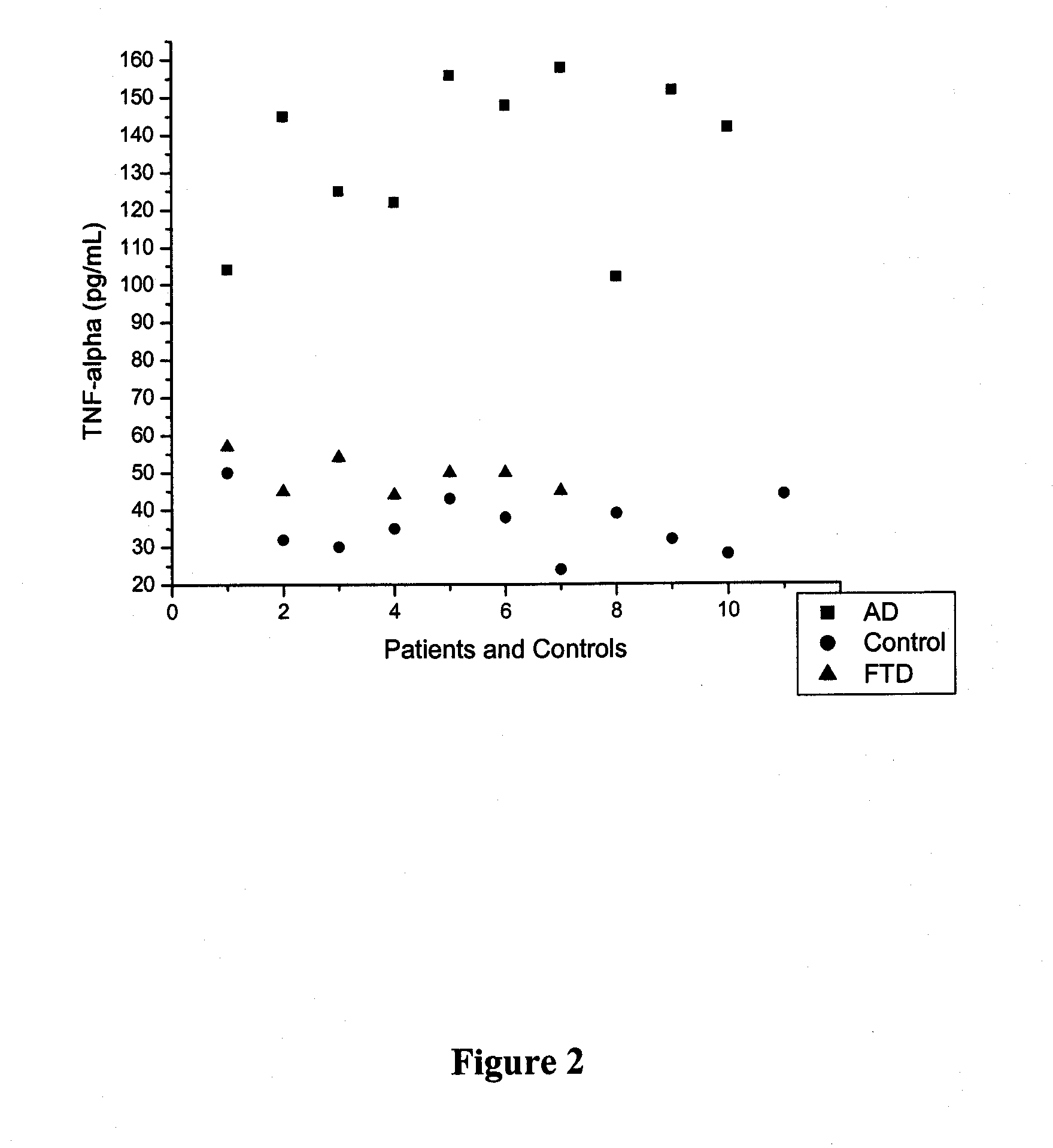Methods and kits for the differential diagnosis of Alzheimer's disease versus frontotemporal dementia and for the diagnosis of frontotemporal dementia, comprising FAS-L and CK 18 as biomarkers
a technology of alzheimer's disease and frontotemporal dementia, applied in the field of methods and kits, can solve the problems of destroying a person's memory and ability to learn, reason, and make judgments
- Summary
- Abstract
- Description
- Claims
- Application Information
AI Technical Summary
Problems solved by technology
Method used
Image
Examples
example 1
[0126]Patients
[0127]Twenty-eight subjects in total were recruited for the study. The subjects represented three distinct groups: FTD (n=7), AD (n=10), and healthy controls (n=11). Patients with FTD were diagnosed according to the Neary criteria (Neary et al. (1998) Neurology 51(6):1546-54) and patients with AD were diagnosed according to NINCDS-ADRDA criteria (McKhann et al. (1984) Neurology 34:939-944). Disease duration was calculated as the time between the first symptoms reported by the patient or caregiver and the time of clinical examination. Cognitive decline was rated using the Mini-Mental State Examination (MMSE) (Mattis S. “Mental Status Examination for Organic Mental Syndrome in the Elderly Patient”. In: Bellak L, Karasu T B, editors. Geriatric Psychiatry. New York: Grune and Stratton, 1976: 77-121). All diagnoses were made by a neurologist. Patients and controls were matched for gender, age, race, marital status and education. FTD subjects ranged in age from 48 to 75 year...
PUM
| Property | Measurement | Unit |
|---|---|---|
| TNF-α | aaaaa | aaaaa |
| time | aaaaa | aaaaa |
| physical | aaaaa | aaaaa |
Abstract
Description
Claims
Application Information
 Login to View More
Login to View More - R&D
- Intellectual Property
- Life Sciences
- Materials
- Tech Scout
- Unparalleled Data Quality
- Higher Quality Content
- 60% Fewer Hallucinations
Browse by: Latest US Patents, China's latest patents, Technical Efficacy Thesaurus, Application Domain, Technology Topic, Popular Technical Reports.
© 2025 PatSnap. All rights reserved.Legal|Privacy policy|Modern Slavery Act Transparency Statement|Sitemap|About US| Contact US: help@patsnap.com



